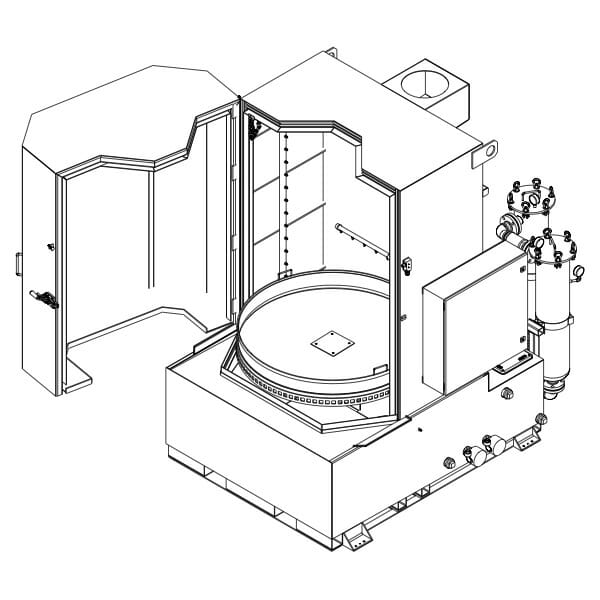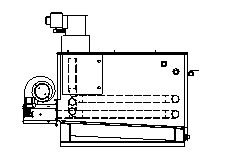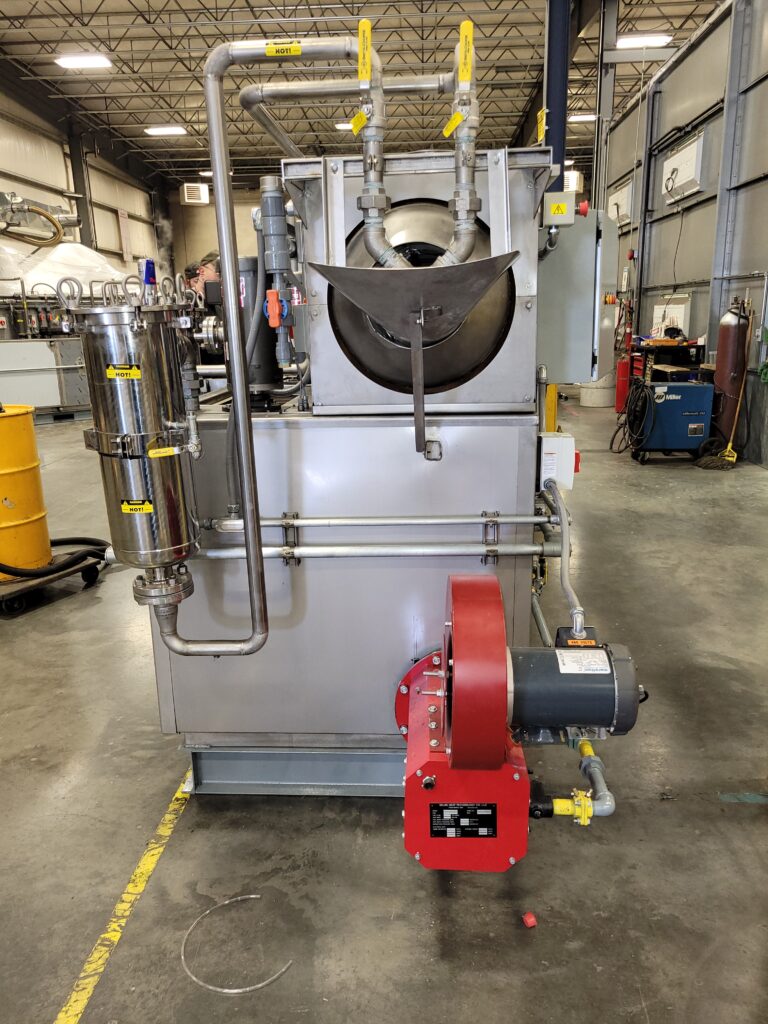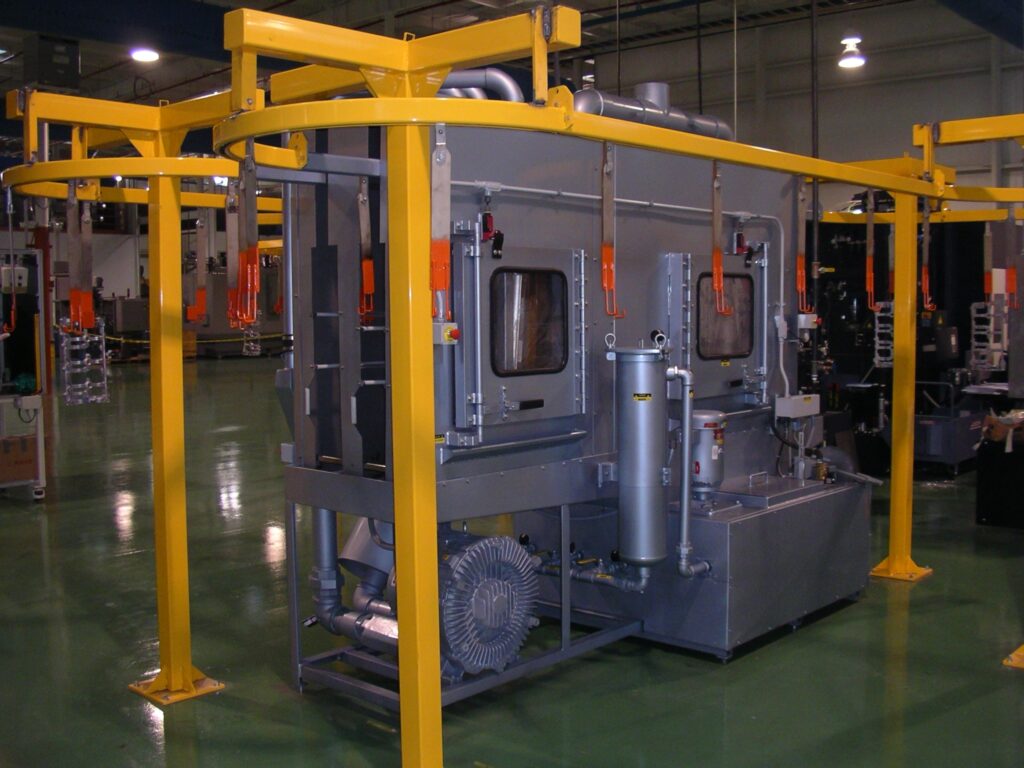Many companies that offer industrial parts washers suggest pressure is the most important factor in parts cleaning. The force of spray or turbulence is only one piece of what should be considered during the cleaning process. Aqueous parts washers use time, temperature, agitation and flow. All of these factors work together to clean parts effectively.
For a successful clean, you must have the right balance of pressure and flow. Pressurized spray knocks off dirt and debris, but debris is left behind to recontaminate parts without proper flow. Jenfab emphasizes flow over pressure to provide a faster clean for our customers. Learn more about why flow is crucial to any aqueous parts washer.
Wade into the Cleaning Process
First things first: How does a water-based parts washer work? How does it remove grease and grime? Aqueous parts washers use a combination of chemical, thermal and mechanical means to remove soils. Aqueous cleaning systems combine the following methods to achieve the proper clean:
- – Cleaning solution. An aqueous cleaning solution removes a specific soil from a specific material. The water-based cleaning solution, or chemistry, helps remove residue without damaging the part’s material. It works in combination with heat and agitation.
- – Heat. Heat can accelerate the cleaning process. That’s why many aqueous parts washers have heated tanks. Higher temperatures increase the rate of reaction between the water, chemistry and soil. Heated parts washers can also aid in melting soils from a part’s surface.
- – Movement. Aqueous parts washing requires agitation or impingement. The solution must move against or through the parts. Spray nozzles, rotating baskets and ultrasonics are built into commercial parts washing machines. These features work alongside the cleaning chemistry to remove soils from parts.
How Solution Flows Through A System
The flow of Jenfab’s aqueous parts washers is the same across all our products. A heated tank holds the aqueous parts washing solution, and a pump sends it to the spray manifold inside the machine. After being sprayed onto the parts, the cleaning solution moves through a debris screen or chip basket and returns to the tank. The solution continuously recirculates.
Any left-behind soils will recontaminate the parts and slow the cleaning process. Using a debris screen or chip basket ensures removed soils aren’t brought back into the solution tank. An aqueous parts washer keeps the cleaning solution fresh for many washes.
Optional bag or cartridge filtration can be added in-line with the pump and spray manifold on most machines. This enhances precision cleaning capabilities by utilizing filtration down to 5 micron.
5-Step Flow
- 1. Aqueous cleaning solution sits in a tank.
- 2. The solution is sprayed onto parts.
- 3. Soils are filtered from the solution.
- 4. The solution returns to the tank.
- 5. Repeat.
Pressure vs. Flow: Which is Better?
You need both pressure and flow for a parts washer to work as it should. Yet, flow is arguably the most essential of the two. When you wash something, you scrub it and rinse it off. The same goes for parts washing. Pressurized water acts as the scrub and flow acts as the rinse.
Cleaning Under Pressure
Aqueous parts washers depend on pressure to remove soils from parts. Pressure is the force of water measured in pounds per square inch (PSI). Aqueous solution is sprayed onto parts—without the right force, tough soils will remain stuck to the material. The force of water, combined with the chemistry and heat, takes out soils. Once the debris is loosened, these soils are left suspended in the solution.
Parts Washer Flow Rate
A parts washer’s flow rate measures its ability to rinse away soils. Flow is the volume of water measured in gallons per minute (GPM). Think of GPM as the flow of dirt and debris being flushed away from parts. Soils in the cleaning solution are captured before the cleaning solution returns to the tank. Adequate flow ensures that parts are not recontaminated with soils. If a higher volume of aqueous solution flows through the cleaning chamber, soils are removed at a faster rate.
Flow & Cleaning Power
More pressure doesn’t produce a better, faster clean. Too much pressure can damage part surfaces. A better flow, on the other hand, does affect your cleaning capability. The higher GPM a machine has, the more efficiently it can clean. An aqueous parts washer’s flow affects the amount of time it takes to clean parts. The bottom line is a higher flow means a faster clean.
Choose a manufacturer with an emphasis on flow. Request a quote for a custom aqueous parts washer today, or order our ready-to-ship Orca and Avenger for your shop floor.


















